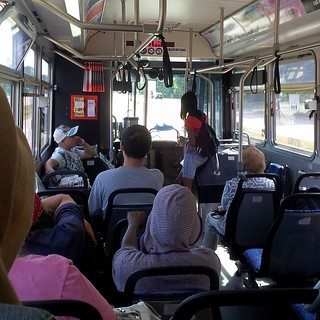 |
| Map of recommended bus routes to be implemented once the Green Line (Central Corridor) begins operation in 2014. |
In preparation for the opening of Green Line light rail 2014, Metro Transit has been busy over planning out how to rearrange connecting bus routes. Since the light-rail line will take over as the primary service in between downtowns of Minneapolis and Saint Paul, operator hours currently dedicated to bus routes 16, 50, 94 will be freed up and redistributed to other lines in the system.
An initial plan was released back in June and presented at some open house meetings and made available online. 650 people and organizations submitted 800 comments to Metro Transit, and they say the feedback was mostly positive. Several routes in the Central Corridor area will see higher frequency service and expanded service hours, including new weekend service in some cases.
Two hot topics were the addition/restoration of a route 83 bus on Lexington Parkway and the frequency reduction on the route 94 express bus which links the downtowns of Minneapolis and Saint Paul.
Route 83
Route 83 generated 176 comments—22% of the total—and was a mix of positive and negative. A route 83 bus had been tried on Lexington about a decade ago, but hadn't generated enough traffic at the time to continue operating. Metro Transit was revisiting the idea since Lexington Parkway is in the middle of a 2-mile gap between the 84 on Snelling Avenue and the 65 on Dale Street.
The June version of the plan had the route 83 bus running north only to Energy Park Drive to reach Snelling Avenue before finally terminating at Snelling and Como Avenue. One major reason not to continue farther north on Lexington is the BNSF Railway bridge just north of Energy Park Drive: it has low vertical clearance and requires low-slung buses to have a safe operation.
However, the community around Como Park pushed heavily to have the route extended farther north, and it appears their wish has been granted. Route 83 is now planned to run north to Horton Avenue and then loop around the western edge of the park on Hamline before running east to the intersection of Lexington and Larpenteur Avenue.
Near the south end of the route, the idea of a new bus line was much less popular. The bus is now planned to detour away from Lexington at Jefferson Avenue, make a modest zig-zag, and enter Interstate 35E from Randolph Avenue to make the short hop to West 7th Street.
Hopefully the new version of this route will be successful and stick around longer than the last shot at it did.
Route 94
Route 94 service received 85 comments, or just over 10% of the total. There was a lot of concern over the initially planned reduction in service, which would have brought the 94 down to just "expanded peak" hours, with service going away entirely during midday hours on weekdays. Route 94 is also planned to be reoriented to enter and leave downtown Saint Paul via the 5th Street ramps, bypassing the typical route used today which often loops around the State Capitol area and frequently runs past the Ravoux Hi-Rise on Marion Street.
Metro Transit has decided to continue running the 94 during midday hours on a half-hourly basis (down from a roughly 15-minute interval today). And to address the concerns of Ravoux residents, the route 16 bus will be rerouted to run along Marion Street rather than circling around the State Capitol grounds.
The June plan had suggested that route 94 buses skip the stop at Snelling Avenue, and that recommendation has been carried forward despite some requests to keep it. The drop-off stop in the middle of the Interstate 94/Huron Boulevard interchange will still be available, however.
As the original plan stated, route 16 will only run from downtown St. Paul to University & Oak Street on the UMN campus, and will not operate all the way into downtown Minneapolis (except late night). Transfer to UMN campus buses, Green Line, routes 2 and 6 to get to other locations.
Other routes
Some proposed changes to existing routes have been rolled back. The path of route 87 along University Avenue and across Interstate 94 had been put up for possible changes, but the revised plan retains the original routing. Since route 63 along Grand Avenue is now planned to be extended up Cretin Avenue to Raymond and University Avenues at its western end, there wasn't as much need to reroute the 87.
In general, bus routes in the Central Corridor area are going to have frequencies increased -- often bumping up from current intervals around 30 minutes down to 20 minutes. Some routes will do even better, such as route 84 along Snelling Avenue, which is still planned to bump up to to 10-minute service along the bulk of the route compared to the 15-minute cycle today.
I'm happy to see that Metro Transit officials did take heed of many of the comments from riders in the corridor area. I felt it was a good plan to start out with, and while the new version won't make everyone happy, the changes strike me as being very positive for the most part.

